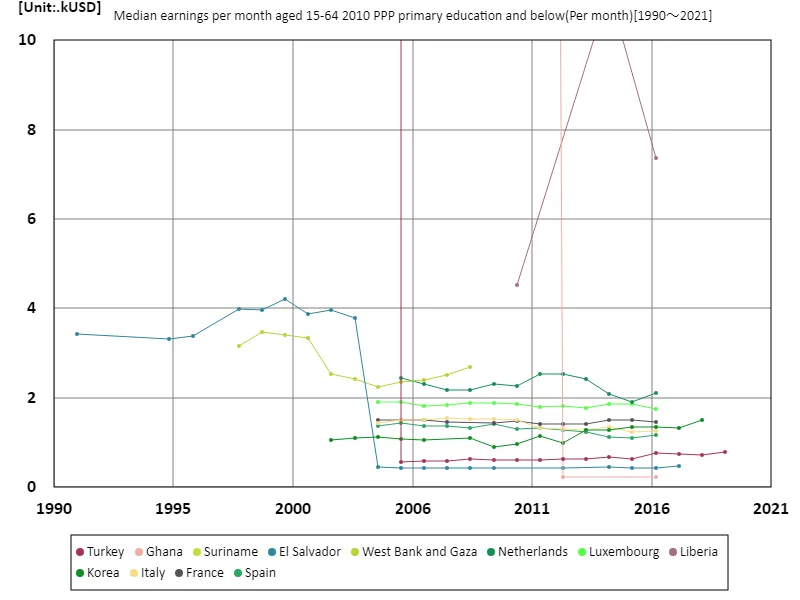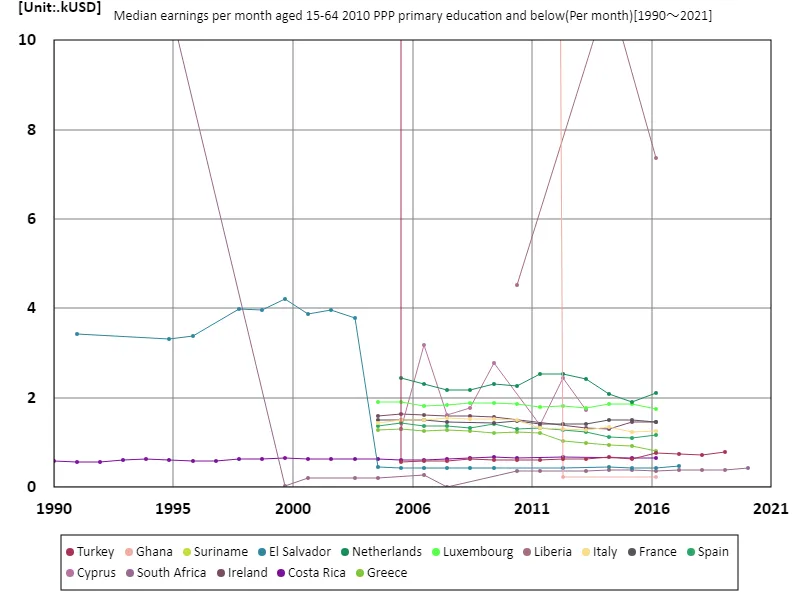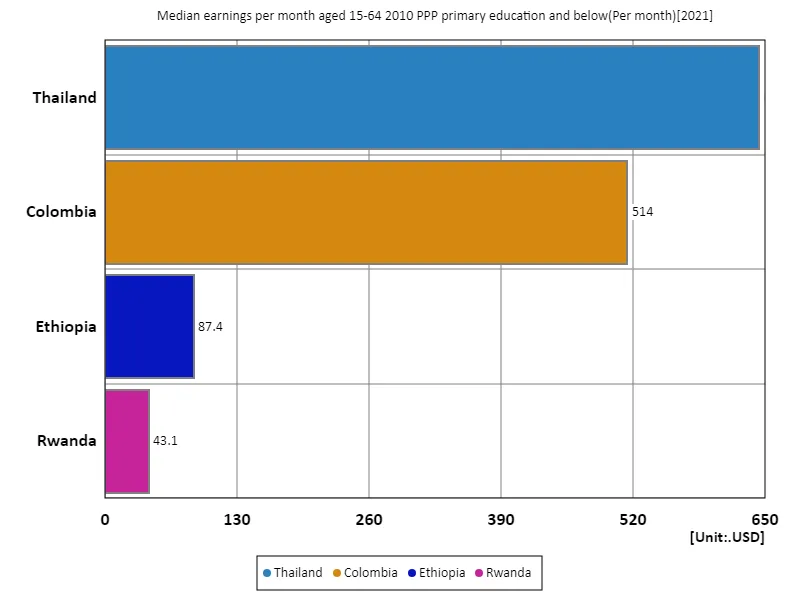- Abstract
- Average monthly income (primary education or less, 15-64 years old, 2010 purchasing power parity)
- Average monthly income (primary education or below, 15-64 years old, 2010 purchasing power parity) (worldwide)
- Average monthly income (primary education or below, 15-64 years old, 2010 purchasing power parity) (nations around the world, latest year)
- Reference
Abstract
In past decades, wages for those with primary education or below have generally been lower in developing countries, with significant variations driven by economic growth, industrialization, and educational access. In 2019, Turkey stood out with the highest average monthly income in this category at 799 USD, reflecting its expanding economy and higher demand for labor. Other developing regions typically saw lower wages, but the trend towards improved earnings has been visible in some countries with growing economies and better integration into global markets. However, educational disparities persist globally.
Average monthly income (primary education or less, 15-64 years old, 2010 purchasing power parity)
From 1991 to 2019, the global average monthly salary for individuals with primary education or below saw notable fluctuations, reflecting broader economic shifts. Turkey recorded the highest at 518 MUD in 2004, marking a peak driven by rapid industrialization and growth. However, by 2019, the average dropped to 154μ% of its peak value, suggesting slower wage growth and economic challenges. This decline aligns with global trends where many countries struggled with inflation, educational disparities, and evolving labor markets, leading to slower income growth despite earlier economic booms.


The maximum is 518MUSD[2004] of Turkey, and the current value is about 154μ%
Average monthly income (primary education or below, 15-64 years old, 2010 purchasing power parity) (worldwide)
From 1990 to 2020, the global average monthly income for individuals with primary education or below showed considerable variation, reflecting economic changes and regional disparities. Turkey reached its peak in 2004 with 518 MUSSD, driven by rapid economic expansion. However, by 2020, it had dropped to 154μ% of that value, signaling a slowdown in income growth due to inflation, currency depreciation, and other economic challenges. This trend mirrors broader patterns in developing economies, where wage growth has often lagged behind inflation and educational improvements, impacting overall income stability.


The maximum is 518MUSD[2004] of Turkey, and the current value is about 154μ%
Average monthly income (primary education or below, 15-64 years old, 2010 purchasing power parity) (nations around the world, latest year)
In 2021, Thailand led with the highest average monthly income for individuals with primary education or below at 644 USD, significantly above the global average of 322 USD. With a total of 1.29 KUSD, the data highlights a growing income disparity between regions. This trend reflects economic advancements in certain countries, particularly in Southeast Asia, where labor markets are evolving. However, the global average remains relatively low, indicating persistent challenges in developing economies, where wage growth often lags behind inflation and educational advancements, hindering overall income improvements.


The maximum is 644USD of Thailand, the average is 322USD, and the total is 1.29kUSD



Comments